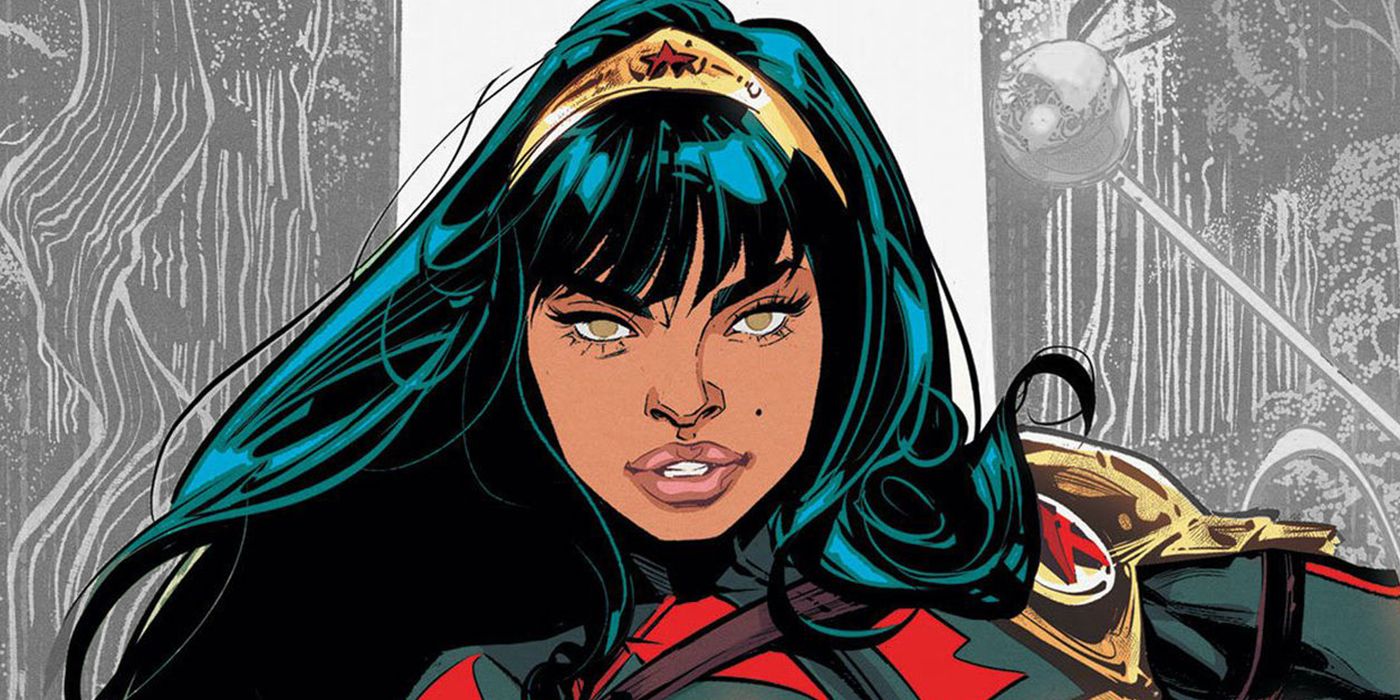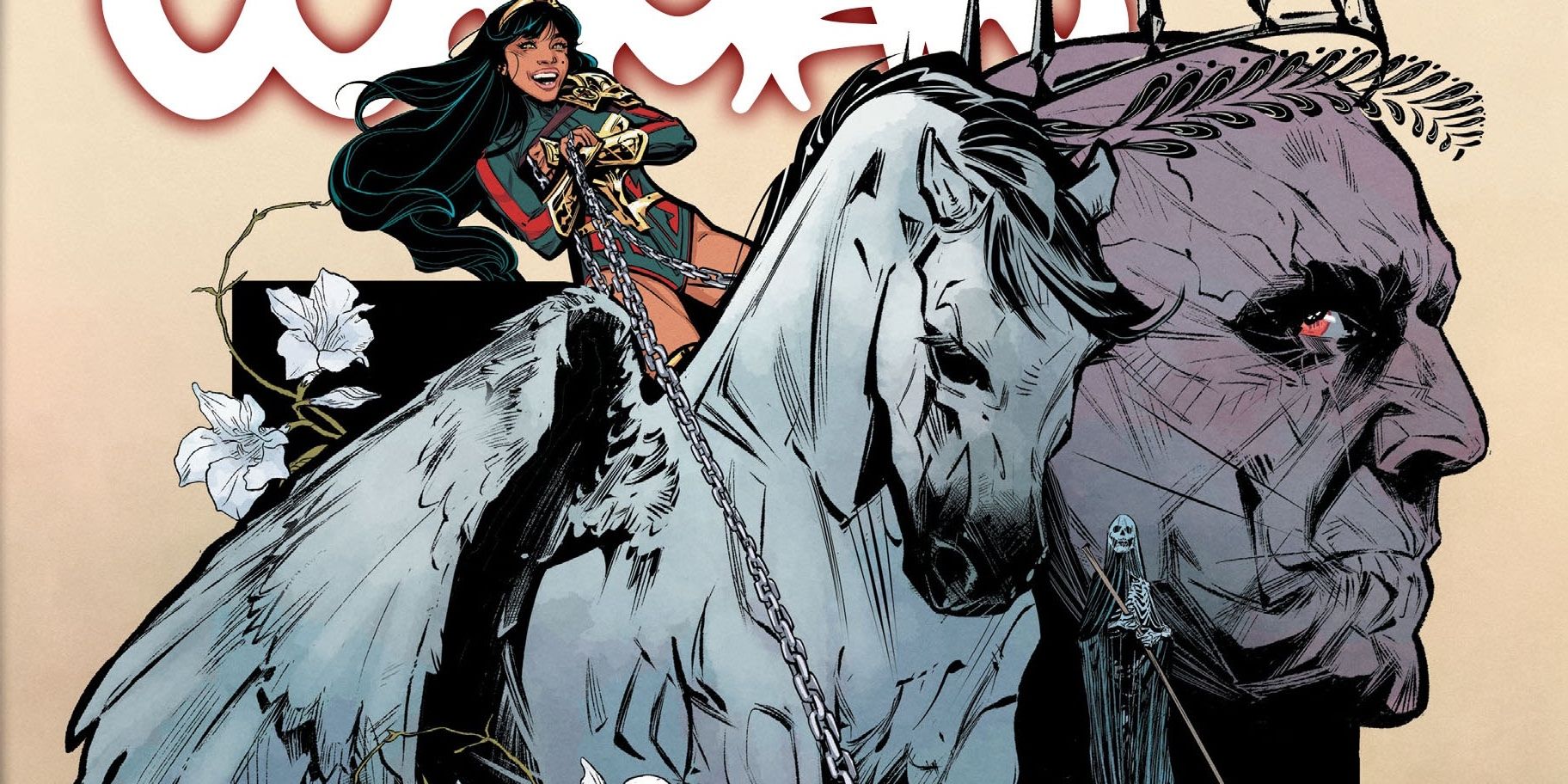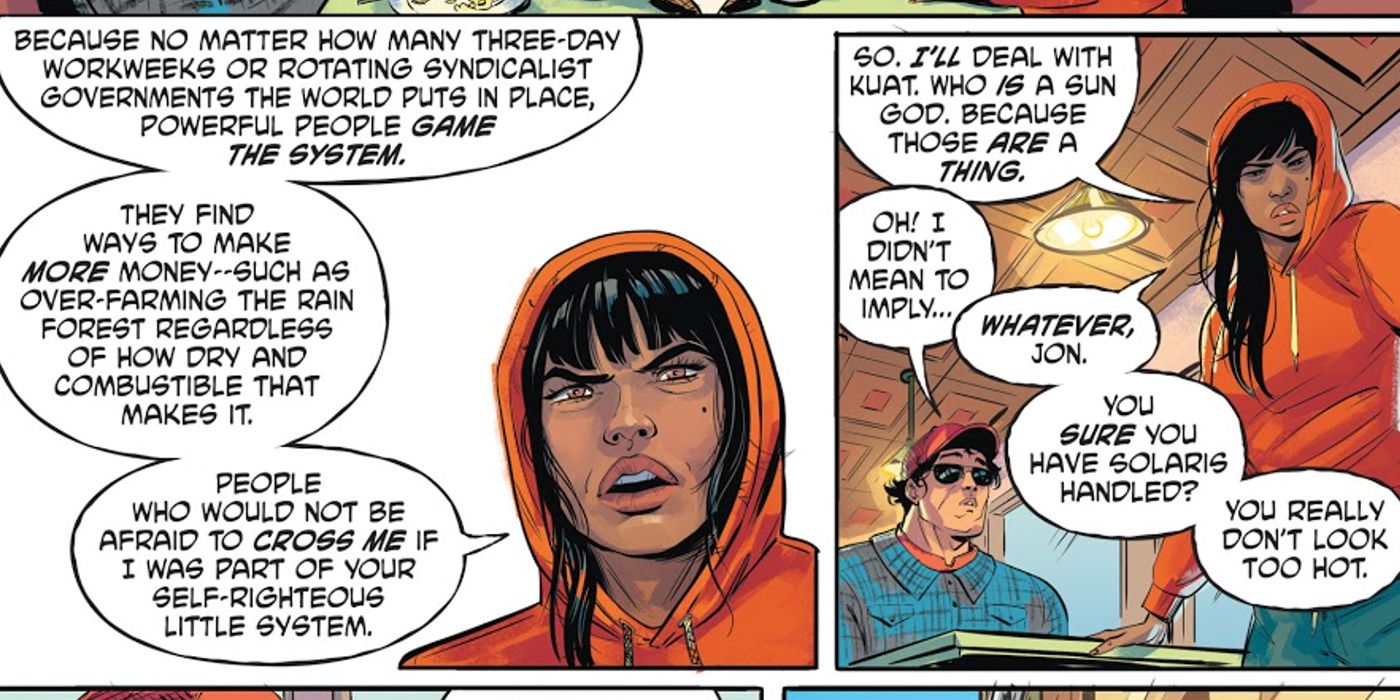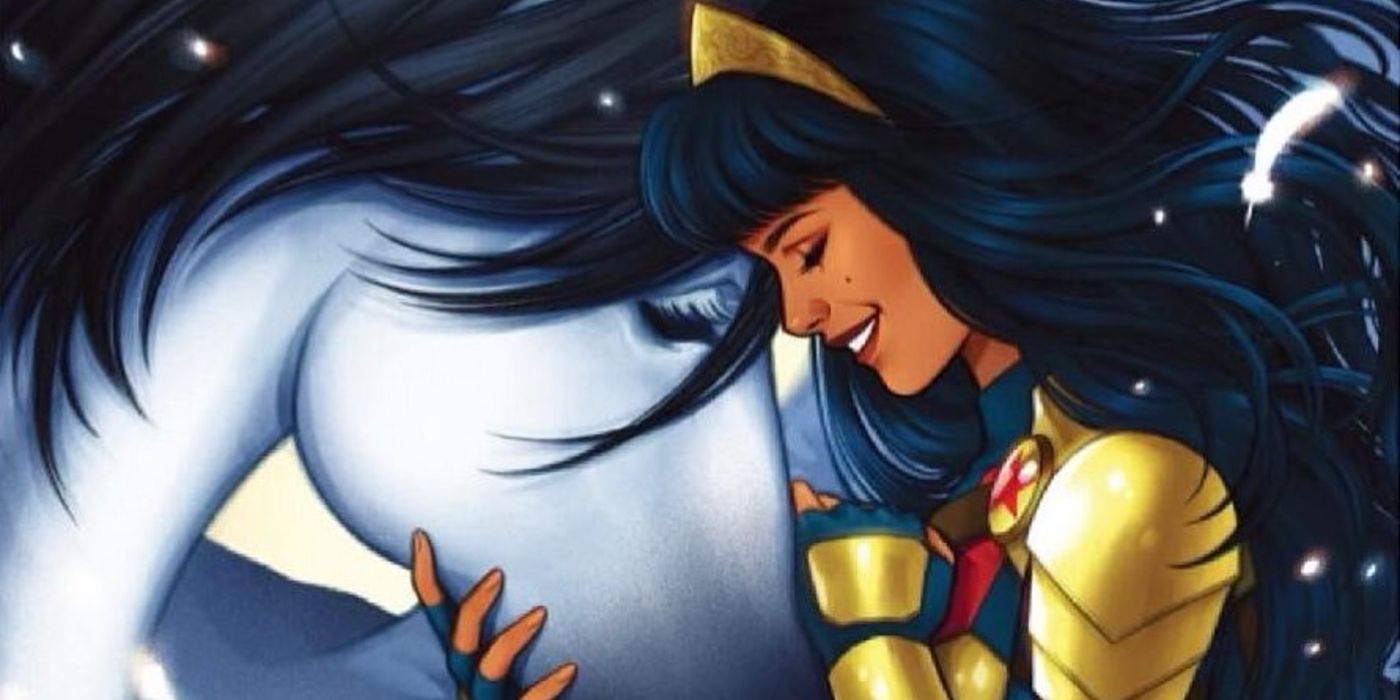
Warning: spoilers for Wonder Girl #1 by Joëlle Jones, Jordie Bellaire, and Clayton Cowles are ahead.
As part of their Future State event, DC Comics introduced a new version of Wonder Woman named Yara Flor. Created by Joëlle Jones, who wrote and illustrated both issues of Future State: Wonder Woman, Yara quickly became a fan favorite with her bold personality and unique take on the Wonder Woman mythos. Now, with her own series as Wonder Girl underway, Yara Flor has a bright future ahead of her as one of DC Comics' most promising new characters.
Like many other heroes who were spotlit during Future State, Yara represents a DC Universe with a radically different take on some of its biggest characters. The daughter of an Amazon woman from Themyscira and a Brazilian river god, Yara was born in the Amazonian Rainforest, but was brought up in Idaho. This marked a break from Diana Prince's Wonder Woman, as Yara was not raised on Themyscira alongside other Amazons. In Wonder Girl #1, Yara travels to Brazil to connect with her roots, only to get pulled into a mythological world she never knew about (written by Joëlle Jones, art by Joëlle Jones, colors by Jordie Bellaire, letters by Clayton Cowles).
Thus far, Yara has shined as an auteur creation, that is, a character crafted by Joëlle Jones's singular creative voice. Jones's stories in both Future State and in Wonder Girl carry an artistic and narrative distinctiveness that make Yara so widely recognizable. Considering that Yara is still in her nascent stage as a character, there remains a question of how she will be incorporated into other areas and stories of the DC Universe. Superhero comics are predicated on characters' abilities to be reinterpreted and reproduced by multitudes of other writers and artists. It is why longstanding characters like Batman and Superman remain fresh almost a century since they debuted. With Yara's identity so closely tied to Jones's work as a writer, artist, and creator, it will be considering to see where she goes under the stewardship of other writers and artists in the industry.

Yara Flor's Wonder Girl is unquestionably a fantastic addition to the DC Universe. At this point in her publication history, there begs a question of whether she is a great new character, or she has been written into a great story by Jones–one that might struggle in the future without its creator on board. That said, given both Jones's material as well as appearances in stories by other creators, Yara Flor's Wonder Girl evidences that she is a great character with immense potential beyond the scope of Jones's initial vision, because of the specificities of her story.

With thousands of characters in the DC Universe, it is important to first consider what actually makes a character "great." After all, it isn't uncommon in superhero comics for D-list characters to be elevated beyond their arena in the hands of the right creative team. As such, comics characters are rarely static because of how often they change hands. But what differentiates great characters from the rest of the pack is their ability to retain their emotional resonance while still expanding on their existing mythos, enriching not only their own story but their comics universe as a whole. Great characters are viable in their ability to bring new meaning to the worlds they traipse around in, challenging readers to adopt an evolutionary perspective of their favorite heroes.
It is for these reasons that Yara Flor has the makings of a great character. The mythological scope of Diana Prince's Wonder Woman has, in some ways, made her inaccessible to readers, as she is more a character to marvel at rather than marvel with as she goes on amazing adventures across the universe. Yara switches up this relationship between character and reader, partly due to the fact that she was not raised on Themyscira, or within a mythological context like Diana. Despite being a demigod from the Amazon Rainforest who rides a winged horse named Jerry, Yara is also a girl from Boise, Idaho, trying to uncover a past she has no memory of. In Wonder Girl #1, Yara acts an avatar for readers to learn more about her character, as she embarks on a quest about her personal history, thus leveling the plane between reader and hero. Her Wonder Woman in Future State embodies familiar heroics just as much as it shows off her impulsive nature, encouraging readers to re-evaluate their expectations of who Wonder Woman can be.

Yara's potential as a character who blends street level accessibility with the mythological is explored in Future State: Superman/Wonder Woman #1, a story that was not created by Joëlle Jones (written by Dan Watters, art by Leila Del Duca, colors by Nick Filardi, letters by Tom Napolitano). In it, Yara prevents a helicopter from crashing into a congested street in São Paolo, only to discover that it was carrying a local councilman inside. Confronting the politician, she asks him why he hasn't taken action to repair the city's streets, which is the source of the traffic jam to begin with. She points out how his policies have only benefited the rich, and makes sure that he will continue to serve responsibly before going off to address her grievances with Kuat, the Amazonian sun god.
This exemplifies why Yara Flor works beyond the scope of her creator's work: she fills an unusual niche in the DC Universe. While DC Comics is best known for its mythic handling of superheroes, Yara also excels in her advocacy for ordinary people, functioning as an effective liaison between the two. With Future State offering a glimpse of a more folk-centered approach to DC's heroes, Yara could be a natural fit for this change overall.

Ultimately, Yara Flor's Wonder Girl is a great character because she is not afraid to show her imperfections as a superhero. She possesses an eagerness to help people alongside her own personal flaws that is well-suited for superhero comics as a serialized medium. It is easy to see where Yara can grow as a character, because Jones has written her in a promisingly organic manner. As her appearance in Future State: Superman/Wonder Woman shows, this trait carries over easily to other writers and artists besides Jones.
For now, Wonder Girl is still in the process of figuring herself out in the world, as well as in the DC Universe at large. As a future Wonder Woman, Yara has huge shoes to fill, but neither creator nor character are shy of reaching for this goal. In this way, Wonder Girl has made a huge impact in the relatively short time, suggesting that creators beyond Jones will find plenty of inspiration for future iterations of her character.
from ScreenRant - Feed https://ift.tt/34rsU3F


0 Comments